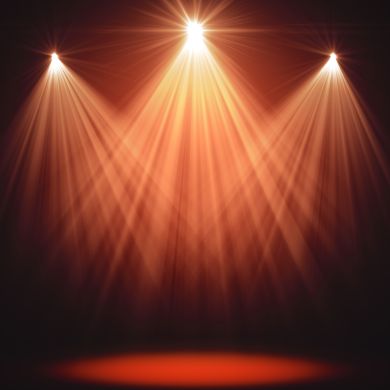The magic of lighting: From the stage to everyday life

Silence hangs in the air in a darkened theatre. Suddenly, a beam of light breaks through the darkness and shines on the protagonist. At that moment, all eyes converge, breath is held and the audience is plunged into a new world. That is the magic of stage lighting. But what if we told you that this same magic is present in our everyday lives, influencing our emotions, our perceptions and even our well-being?
Stage Lighting: The power of telling stories with light
In theatre, dance, cinema or any show, lighting is not just a complement - it is one of the main protagonists. Through the play of shadow and light, intensity and colour, the story comes to life, guiding the audience's senses and provoking deep emotional responses. A closed focus can emphasise a moment of introspection. Red light can convey suspense. A penumbra can suggest mystery. Every lighting choice is not random, but carefully considered to enhance the sensory experience.
If light on stage can transform a mundane scene into a breathtaking moment, imagine the impact it can have on our everyday lives.
The impact of light on our daily lives
Just like in a play, the lighting around us has a direct effect on our mood. The warm light of a late afternoon can make us feel comfortable and relaxed, while the cold light of an office can keep us alert and focused. Natural light regulates our biological clock, affecting our mood and productivity. Without realising it, we are constantly being influenced by the light around us.
Imagine walking into a room lit with soft, indirect tones that create a welcoming and intimate feeling. Now imagine the same room lit with intense, direct white light. The atmosphere changes completely, just as it does in the theatre when a change in lighting alters the perception of a scene.
Bringing stage lighting into everyday life
If lighting on stage is carefully considered to tell stories and create impact, why not apply the same approach to our own homes, workplaces or any other space we frequent?
-
Creating standout moments: just like a spotlight on an actor, we can use directional lighting to highlight important elements of decoration or architecture.
-
Playing with the temperature of the light: warm tones for moments of relaxation, cool tones for moments of concentration.
-
As with stage lighting, the absence of light tells a story. Indirect lighting can create depth and cosiness.
-
Go for dynamic lighting: dimmable fixtures allow you to change the mood as needed, just as stage lighting changes from act to act.
Conclusion
Stage lighting isn't just an artistic tool - it's living proof of how light affects us on every level. What moves us in the theatre or cinema is not just the plot or the acting, but also the way the light draws us into the story. In the same way, the lighting in our everyday spaces can set our mood and completely change our experience of an environment.
What stories do you want to tell with the light around you?